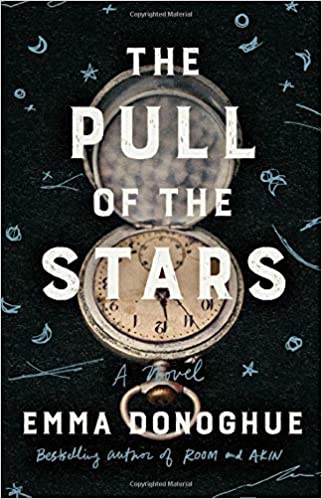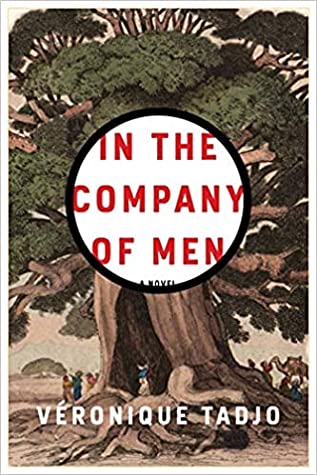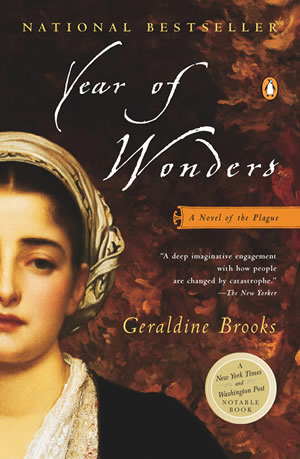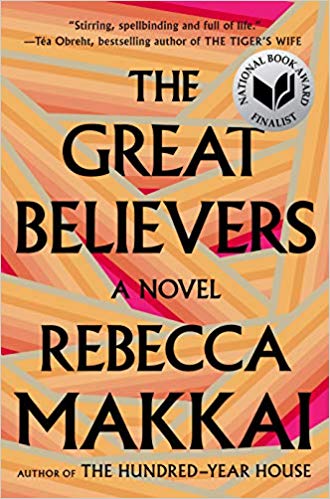Sponsored by The Mad Women's Ball by Victoria Mas, published by The Overlook Press.
The prizewinning French bestseller the Chicago Review of Books calls, “Potent and wicked…darkly entertaining piece of revisionist feminism.” With late 19th century Paris as a backdrop, Victoria Mas blends history, science, and spiritualism in this chilling story of two women institutionalized in the infamous Salpêtrière Asylum. Genevieve arrives after a family tragedy; having shunned religion, she’s placed her faith in Salpêtrière’s celebrated psychiatrist, Dr. Charcot. But her firm beliefs are upended when she meets Eugenie, a bourgeois teenager who holds a mystical secret. Eugenie is determined to escape, and needs Genevieve’s help…
I’ve been thinking a lot about the representation of pandemics in fiction lately. Maybe because I’ve started to come across more mentions of it in the books I read. Mostly it’s authors notes explaining that they’re intentionally leaving the pandemic out of their book to provide a bit of much needed escapism. And for the most part, that’s been my preference. Life has been hard enough, right? My reading is an escape from all that. It’s made me think about how few contemporaneous novels were written about the 1918 Flu Epidemic. There was a war going on then, too, of course, but still. It seems like people often need time to come to terms with the pandemic they’re living through before they’re ready to write or read about it.
And yet, contradictorily, there’s a certain comfort in reading about pandemics and epidemics of the past. The literature that came out of the 1918 Flu “speaks to our current moment in profound ways.” There’s a sense of solace in seeing how the world has dealt with pandemics and epidemics of the past. We got through them eventually, after all. Pandemics in historical fiction provide a means of processing what we’re going through without having to face the fear and uncertainty of our present moment, at least directly. They tell us: yes this is awful but one day we’ll be through it. Maybe you’ll find some of that comfort in these historical fiction books, too. Unfortunately, there aren’t as many books about past pandemics written by authors of color, but hopefully that will change soon.

Pull of the Stars by Emma Donoghue
This historical fiction novel is the first that really got me thinking about the parallels we can find in pandemics of the past, and the sense of relief that comes with that. In a Dublin maternity ward in 1918, the affects of the flu are immediate and devastating, impacting expecting mothers and their unborn children alike. Their lives rest in the hands of one young nurse in an understaffed hospital also dealing with the aftermath of war. It’s a heartbreaking portrayal of sickness and loss but also of courage in the face of hardship and the unknown depths of the human spirit.
TW: death and graphic depictions of childbirth and stillbirth

In the Company of Men by Véronique Tadjo, translated by John Cullen
The 1918 Flu Epidemic may be the one that has drawn the most comparisons with Covid-19, but it’s not the only one to devastate the people affected. Tadjo brings to light the Ebola epidemic in West Africa through snapshots of those affected, from doctors protected from the virus by only the thin layer of a plastic suit to the volunteer gravediggers, overwhelmed by the sheer number of bodies. It is especially timely in depicting the question of how we deal with overwhelming fear and prejudice in the face of a devastating health crisis.

The Second Life of Mirielle West by Amanda Skenandore
In the Louisiana institution known as Carville, people branded as lepers were stripped of their rights and quarantined throughout the 20th century. Mirielle West was living the life of a socialite, married to a silent film star in Hollywood’s Golden Age, when a doctor noticed a pale patch of skin on her hand and sent her hundreds of miles away to Carville Lepers Home. At first, Mirielle holds onto the hope that her stay there will be brief, but life at Carville is more of a life sentence than anything. With no other choice, she’ll have to carve out a life for herself among this disparate group of people with an incurable disease.

Year of Wonders by Geraldine Brooks
1666 is a time of fear, and superstition is almost as rampant as the plague ravaging its way across Europe. When an infected bolt of cloth brings the disease to an isolated English village, the spread of illness leads the villagers to turn on each other in a deadly witch-hunt. One young healer takes it upon herself to save her community from disintegration in this book based on the true story of Eyam and its experiences with the deadly Bubonic Plague.

The Great Believers by Rebecca Makkai
In 1980s Chicago, the director of an art gallery sees his career flourish even as the AIDS epidemic devastates the world around him, taking out first one friend, then another. Telling both the story of the survivors affects by the aftermath of the AIDS crisis and those living through it, The Great Believers depicts the struggle to find hope amidst devastation and despair.
MORE FROM AROUND THE WEB:
BOOK RIOT RECS:
- The 16 best pandemic books.
- 10 books about the plague.
- AIDS & HIV in literature.
- Why reading pandemic lit gives me hope.
- How the pandemic has changed our reading lives.
That’s it for now, folx! Stay subscribed for more stories of yesteryear.
If you want to talk books (historical or otherwise), you can find me @rachelsbrittain on Instagram, Goodreads, Litsy, and occasionally Twitter.
Right now I’m reading The Inheritance of Orquídea Divina by Zoraida Córdova and The Chosen and the Beautiful by Nghi Vo. What about you?
